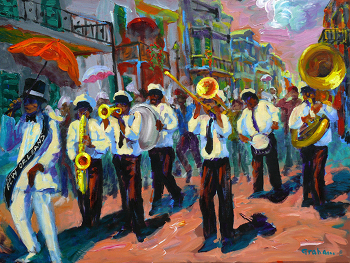I recently wrote an arrangement of the traditional New Orleans tune, “When The Saints Go Marching In” for some beginner students, so I thought I’d share it with you all.
One thing I like about this arrangement is that the melody is pretty straight-forward: the right hand stays in C position (that is, the thumb is on middle C and the rest of your fingers follow up, one finger per note, C-D-E-F-G). Also, the left-hand can be read as-is and it will sound good, but also there’s lots of room for interpretation if you are a bit more advanced.
Here’s how I would go about learning this one.
FOR BEGINNERS:
1. Read the note names (as in say the note letter names out loud for the right hand)
2. Clap the rhythm – make sure to hold those half notes for two full beats. Be careful with the rhythm on line 3, it can be a bit tricky. Don’t fake it – remember, RHYTHM IS KING!
3. Now that you are solid on the notes and rhythm, play the right hand alone.
4. Learn the left hand alone.
5. Put it all together.
If you are a bit more advanced, try this to challenge yourself (make sure you learn the song as written above first – no faking it!)
1. Play around with the rhythm of the melody – don’t add any notes, just make certain notes longer and others shorter – have fun experimenting – remember, when you are playing jazz and pop music, the music should be a GUIDELINE.
2. Play the left hand as quarter-note bass notes – This is a great way to improve your rhythmic feel and hand coordination. Whatever the bass (or root note) of the chord is, that’s what you’ll play in the left hand. If the chord is a “slash chord” (i.e. C/Bb) play the Bb in your left hand as the bass note.
3. If you know how to form triads and 7th chords with your left hand play the left hand using those chords instead of what is written. Try whole notes for the chords first. Then, you can try other rhythms such as quarter notes, or a dotted quarter plus an eighth note.
Happy Shedding!


 RSS Feed
RSS Feed